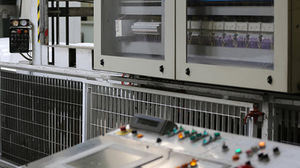
- Production Machines
- Plastics Processing
- Thermoplastic thermoforming
- Technoplast industries
- Products
- Catalogs
- News & Trends
- Exhibitions
Thermoplastic thermoforming automotivefor aeronauticsindustrial











Add to favorites
Compare this product
Characteristics
- Material
- thermoplastic
- Applications
- automotive, for aeronautics, industrial, medical, agriculture, for railway
- Production method
- small series, large series
- Other characteristics
- technical parts
Description
Thermoforming is a technique that involves taking a plate-like material (glass, plastic ...) then heating it to soften it, and to take advantage of this ductility to shape it with a mould. The material hardens when it cools, keeping this form.
Many plastic parts are thermoformed: plastic cups, yoghurt pots, most packaging (blister), etc. Hard cover protection for electronic components, machinery, or even automotive body parts (ex. bumpers). For the thermoforming of thermoplastic we use materials that have a rubbery plate (the difference between the softening temperature and the melting temperature) to a greater or lesser extent. Ideally, this plate should be as broad as possible to provide the best options for thermoforming. It is mainly influenced by the crystallisation rate and the molecular weight (chain length). This is why some thermoplastics are difficult to thermoform, PA, for example.
VIDEO
Related Searches
- Thermoforming
- Thermoplastic thermoforming
- Extrusion
- Technical parts thermoforming
- Plastic extrusion
- Industrial extrusion
- Industrial thermoforming
- ISO 9001 extrusion
- Automotive thermoforming
- Large series thermoforming
- Medium series extrusion
- Aeronautic thermoforming
- Agriculture thermoforming
- Extrusion for the construction industry
- Large series extrusion
- Medical thermoforming
- Thermoplastic extrusion
*Prices are pre-tax. They exclude delivery charges and customs duties and do not include additional charges for installation or activation options. Prices are indicative only and may vary by country, with changes to the cost of raw materials and exchange rates.


